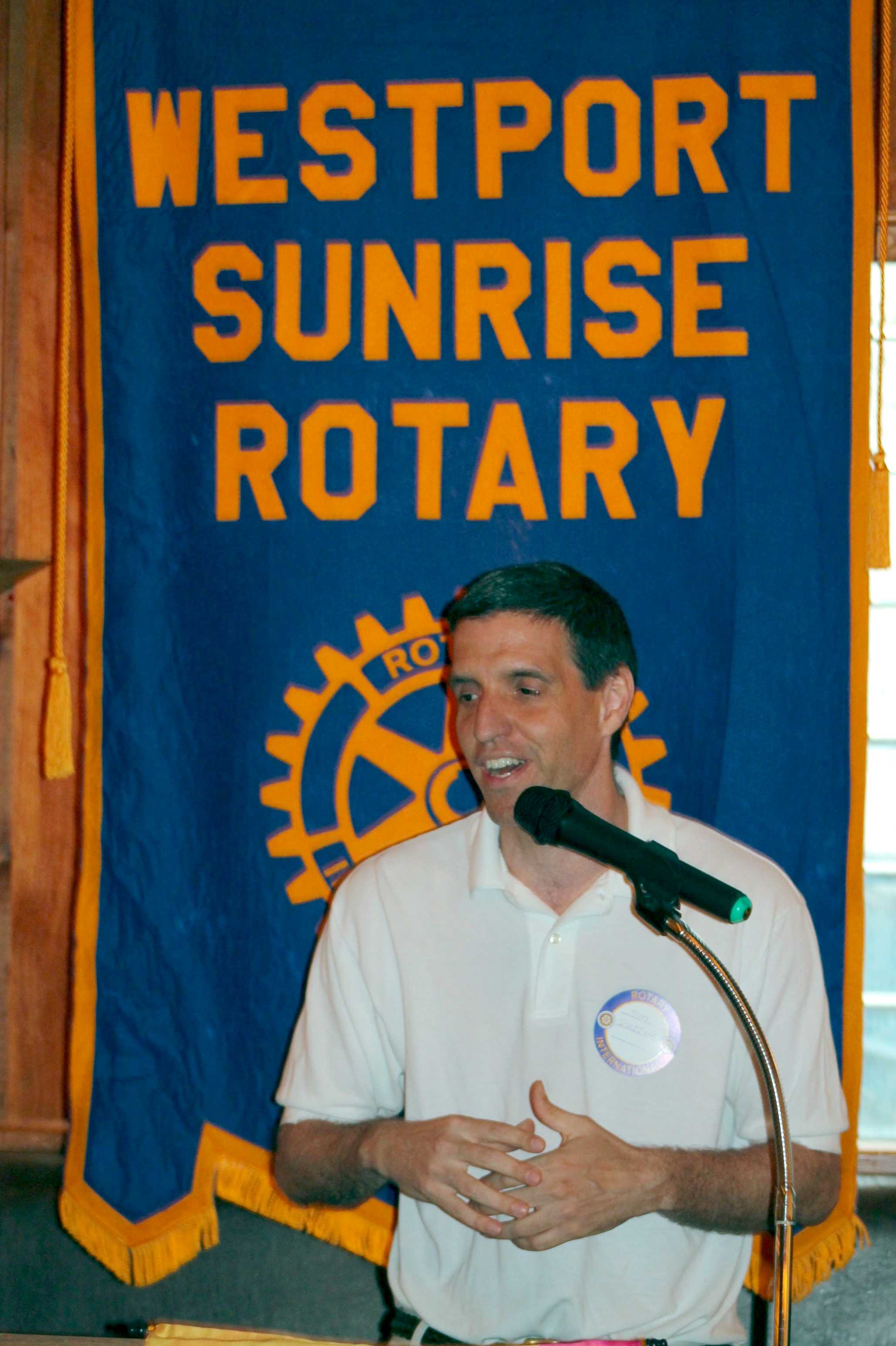
Tim Dutton, Director of Bridge Academy in Bridgeport, introduced his charter school to the Westport Sunrise Rotary, which supports the school financially and professionally, at their June 22 breakfast meeting.
As a public school subject, Bridge is subject to the same laws and mandates as the Bridgeport school system. But unlike other city schools, Bridge is overseen by its own non-profit board. It is separately funded, with about 85 percent coming from the state, 10 percent from the federal government, and only about 5 percent from private sources.
Students are selected by lottery. Many parents seek out Bridge Academy because it is “smaller and safer.” Bridge’s school days and year are similar to the city’s, making it attractive to students similar to those in the city system, including special education and English Language Learners. In contrast, some more rigorous charter schools, ones Dutton labeled “educational boot camps,” draw a more homogeneous cohort.
Bridge began as a four-year high school when Connecticut issued its first charters in 1997. It added seventh and eighth grades six years ago, and today educates 180 high school students and 60 middle schoolers.
Now, after a couple of moves as it grew, the school is housed in the former Frisbie Pie Company plant (yes, the one that gave its name to the game that started as pie tin tossing) on the east side of Bridgeport.
This June saw the first graduation of students who attended for all six years. And one of this year’s graduates earned the school’s first Ivy League acceptance, to Dartmouth.
Dutton began teaching physics in 1989 in Darien. Three years later he moved to Harding High School in Bridgeport, where he taught for five years, then he helped start up Bridge Academy.
His rationale for becoming a part of Bridge Academy was simple: “Harding has 900 students - 400 in the 9th grade.” Bridge seeks to raise what is a city-wide graduation rate of 50 percent.
Bridge also seeks to help every graduate gain at least one college acceptance - most to four year programs, others to two year or community colleges. Yet even as the number and quality of acceptances grow, Dutton noted, some parents worry that they “may be signing on for debt for students who won’t complete their college studies.”
To address this concern, particularly in the current weak economy, the school is developing more vocationally oriented courses to provide a more attainable program for those who may not see themselves as college candidates.
Dutton told the group that, size aside, Bridge Academy differs from the city’s schools in many fundamental ways. One is that it has no teachers’ union - “why would I pay $700 to negotiate against myself.”
Another, and this seems at the core of what makes Bridge’s teachers effective, is that they have greater classroom management autonomy than do the city’s teachers. This affords more individualized instruction and has resulted in Bridge students scoring 10 to 15 percent higher than their peers in the city system. The other side of this trade is that the school can require greater professional accountability.
Last September Bridge Academy had its charter renewed for the next five years. It is now a six-year school, and it has had its first Ivy League acceptance. All speak to its success. This makes Bridge Academy important as the city’s schools’ administration looks to its charter schools as paradigms for higher levels of achievement across a larger part of the city’s 21,000 students.